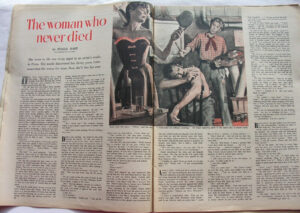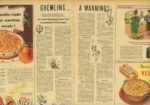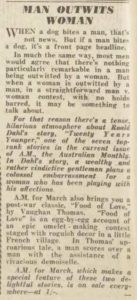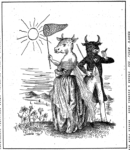Sections: Information | Plot Description | Fun Stuff
Information
- First published:
- May 17, 1952 issue of The New Yorker (as “Skin”)
- Also known as:
- Magazine publications:
Plot Description
Spoiler warning! The year is 1946 and an old man named Drioli shuffles across the Parisian street in the freezing cold. He stops before a picture gallery to admire the painting in the window… and suddenly recognizes the name of the artist. “Chaim Soutine… My little Kalmuck, that’s who it is!” Drioli remembers a night thirty years before, when he had come home from his tattoo parlor flush with cash and bearing bottles of wine. The boy (Soutine) had been painting a picture of Drioli’s wife, with whom he was infatuated. The three of them get very drunk and Drioli comes up with an idea – he wants the boy to paint a picture on his back and then tattoo over it! The boy only agrees when Drioli’s wife Josie says she will pose for the picture. It takes all night, but eventually the picture is finished and signed. Not long after, the boy disappeared and they never saw him again. Josie died during the second World War and Drioli’s tattooing business collapsed. Now, in the present, he is reduced to begging in the streets. He decides to go in and see the other Soutine pictures on display. The gallery workers try to throw him out, but before they can he takes off his shirt and shows the crowd his tattooed back. They are amazed and immediately several men offer to buy the painting from him. Eventually Drioli is faced with a choice: one man offers to pay for a major skin-grafting operation, while another simply asks Drioli to come live at his hotel (the Bristol in Cannes) and exhibit the painting to his guests. Drioli chooses the latter and goes off to dinner with the man. Not long after, a strange painting by Soutine shows up for sale in Buenos Aires. And, the narrator tells us, there is no hotel called the Bristol in Cannes.




